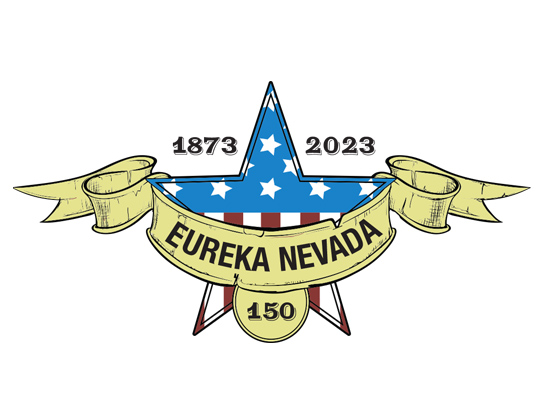Eureka Sesquicentennial!
Story by Dana Lee Fruend, Eureka Tourism Director
Eureka Nevada is celebrating 150 years as the County seat! Eureka will be celebrating all year long with historic events, afternoon tea, contests, dedications and more.
Eureka was carved out of Elko, Lander and White Pine counties, it was founded in 1864, Established a post office in 1870, Newspaper in 1871 and became the Eureka County seat in 1873.
The Eureka County Sheriff’s Office was established in 1873, still going strong and is celebrating their 150th anniversary as well. Eureka today has many of its original 1800s buildings standing vibrant and in use by Eureka County and private businesses.
Eureka was founded in 1864 with high grade ore being located up New York Canyon. The smelting process was developed by 1869 and successful production soon after. Necessary businesses started to pop up, people coming in, mining camps grew into communities, tent cities into housing, hotels, casinos, doctors, pharmacy, grocery, bakery, confectionery, butcher, mercantile, oh and of course brothels, churches and then, eventually schools.
Much needed Law and order was established and that included Nevada mining laws. Important mining laws were established in Eureka County and recorded at the 1879 Eureka Courthouse, many of those laws are still in use today. Much of Eureka was built with Chinese, Irish and Italian laborers. The 1900s brought in Basque ranchers, amazing cars, better roads, electricity and phones.
Eureka at its peak in the late 1800s was the most international city in the United States right along with its sister city, Virginia City. Competition was often neck and neck with who was producing the most gold and silver.
Over 10,000 people from around the world traveled and made Eureka their home by the 1870’s, seeking their fortune in mining or support of mining. The 1870s and 80s saw seventeen smelters producing 750 tons of ore per day. In 1875 Eureka County really opened up with the completion of the Eureka Palisade Railroad.
According to Pacific Narrow Gauge.Org, “It was organized in 1873 by Glimer and Salsbury, owners of two stage companies and J. P. Withington, a Hamilton hotel owner, to serve the mines in the Eureka Mining District in central Nevada. By November work commenced on the line from a connection with the Central Pacific railroad at Palisade. In July 1874, roughly 1/3 of the line was built, with one locomotive, 11 flat cars and 2 box cars on hand.
The project was taken over by Isaac Requa, D. O. Mills, William Sharon, Thomas Bell, and Edgar Mills, all associated with the Bank of California, and Comstock mining interests. Under the new ownership track was completed to Alpha, the halfway point in 1874, when construction ceased until June 1875.
That summer saw the railroad pushed over Garden Pass and into Eureka, the first train reaching town on October 22, 1875. Also in 1875, the owners purchased the Eureka and Ruby Hill Railroad, a short narrow gauge railroad connecting the mines at Ruby Hill with the smelters at Eureka.
In 1876 the railroad reported that it had 4 locomotives, 3 passenger cars and 58 freight cars. By 1878 the roster had grown to 7 locomotives, 3 passenger cars, 2 baggage cars, 21 box cars, 3 stock cars, 55 flat cars and 40 ore cars. The operation did well until about 1885 when mining in the district subsided, by 1888 service was reduced to a tri-weekly mixed train.” Due to the decline in mining at that time, The Eureka Palisade Railroad saw its end in 1938.
After that, well that is another story.
More Sesquicentennial stories about Eureka coming next month.
